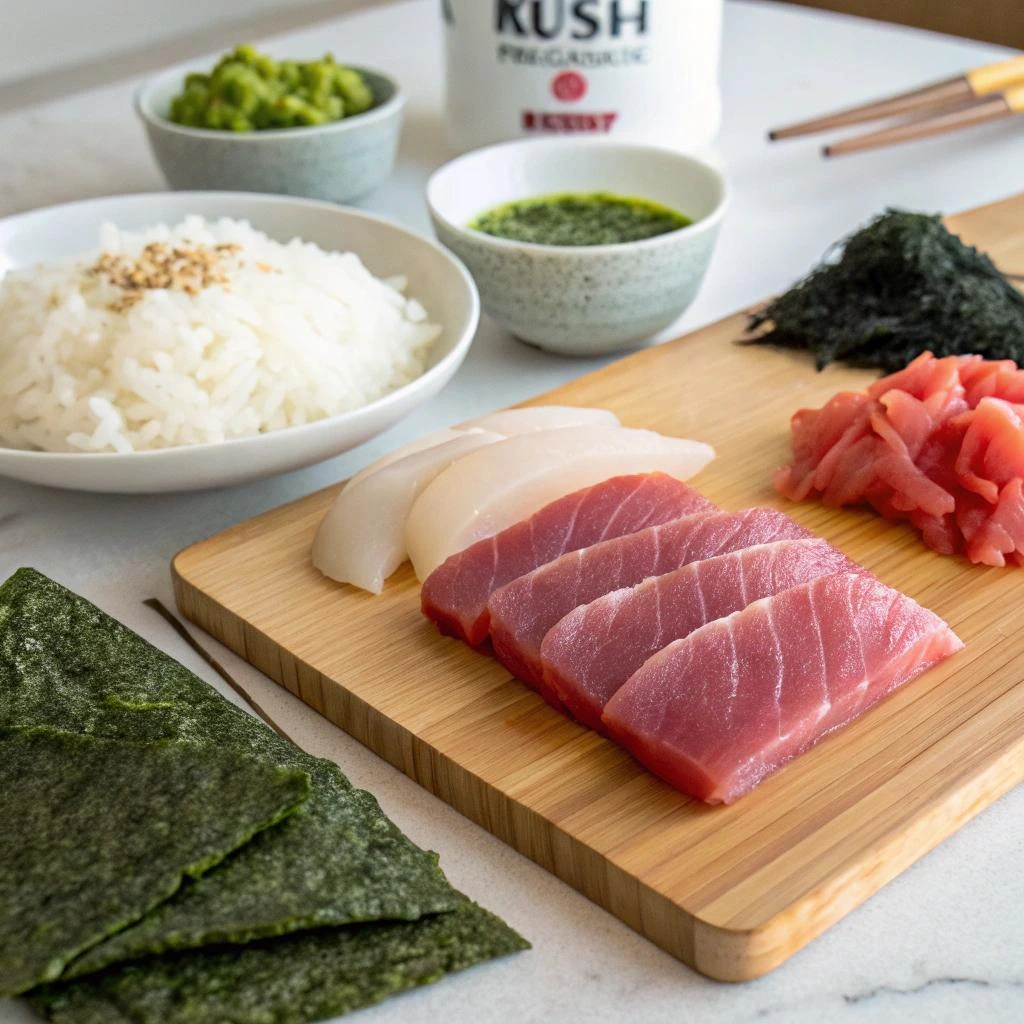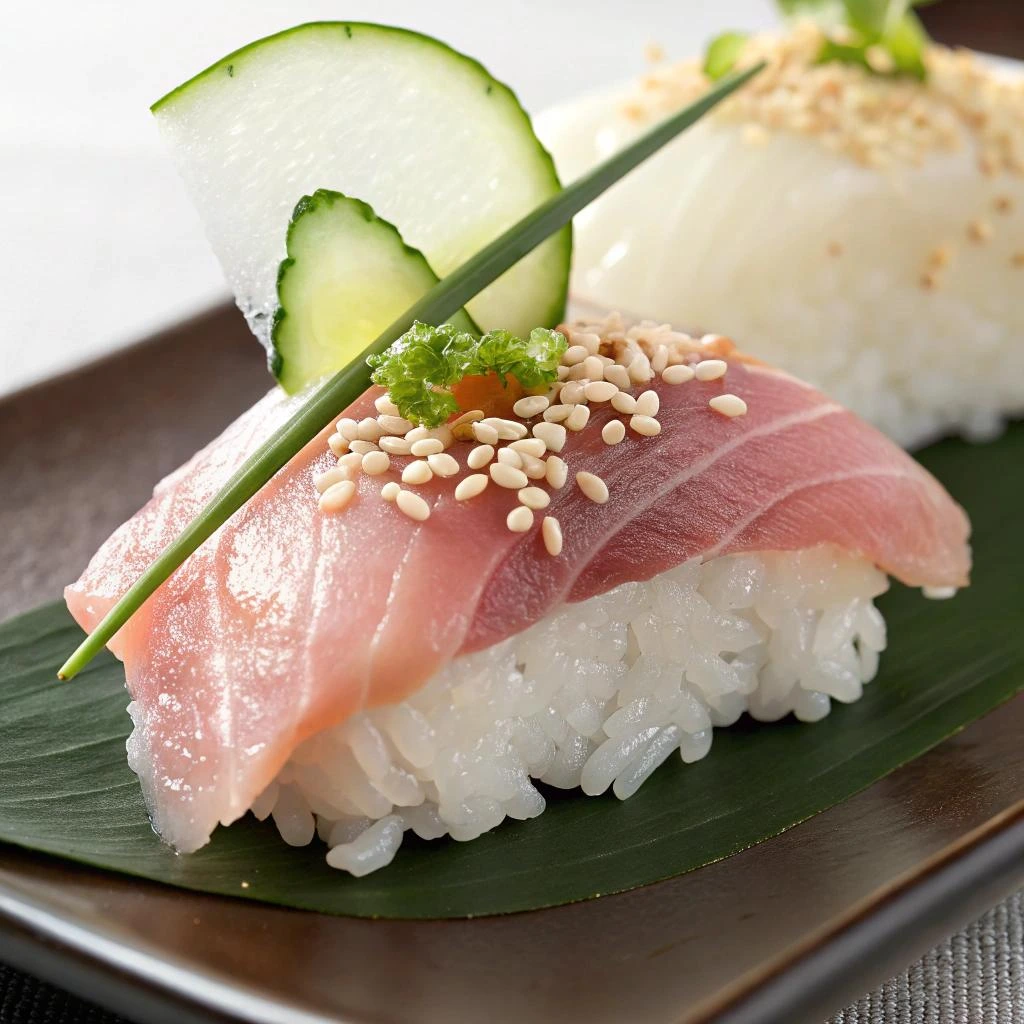White tuna sushi is a staple in many sushi bars, beloved for its silky texture and mild, buttery flavor. For sushi enthusiasts and health-conscious diners alike, uncovering the truth about this popular selection is essential. Is white tuna sushi as healthy as it is delicious? Are there hidden risks you should know about before taking your next bite? Exploring all aspects—nutritional value, safety considerations, and expert culinary tips—can help you make informed choices while indulging in this Japanese classic.
Understanding White Tuna Sushi: What Are You Really Eating?
Ordering “white tuna sushi” sounds straightforward, but the reality is more nuanced. In fact, the term “white tuna” on a sushi menu can refer to several different fish species. Most commonly, the fish served are either Albacore tuna (Thunnus alalunga), known for its pale pink flesh, or Escolar (Lepidocybium flavobrunneum), a deep-sea fish with a white, oily appearance.
- Albacore Tuna (Shiro Maguro): This true tuna species is high in omega-3 fatty acids and is generally safe when consumed in moderation.
- Escolar (Often Misrepresented as White Tuna): This species is known for its creamy texture but contains high levels of wax esters that the human digestive system cannot easily break down.
- Potential for Mislabeling: According to the FDA, mislabeling in sushi restaurants is common, and buyers should be aware of what they are consuming.
On the other hand, food safety agencies urge consumers to clarify with their sushi chefs what “white tuna” actually means in the establishment. Knowing the difference can impact both your enjoyment and your well-being.
Nutritional Benefits of White Tuna Sushi
White tuna sushi offers a spectrum of nutrients, especially when made from authentic albacore tuna. Sushi prepared with true white tuna provides:
- Lean Protein: Each serving is packed with high-quality protein, aiding muscle repair and promoting satiety.
- Omega-3 Fatty Acids: Albacore tuna is notably rich in omega-3s, which are linked to improved cardiovascular health and decreased inflammation.
- Essential Vitamins and Minerals: This fish supplies B vitamins, selenium, and vitamin D, all vital for energy metabolism and immune function.
Meanwhile, sushi rice adds a moderate amount of carbohydrates, providing a quick fuel source. Together with the fish, this combination results in a balanced meal that supports overall health. For comparison, organizations such as Harvard T.H. Chan School of Public Health recognize marine-sourced omega-3s as beneficial for reducing the risk of heart disease.
Specific Health Boons of White Tuna Sushi
- Heart Health: The high concentration of omega-3s helps maintain healthy cholesterol levels and supports heart function.
- Cognitive Function: Research highlights potential benefits for brain health and cognitive performance, especially as part of a regular diet.
- Low in Calories: Sushi made with lean white tuna is lower in calories compared to fatty cuts like toro or salmon belly.
Those seeking a nutrient-dense, low-calorie meal without sacrificing flavor often find white tuna sushi a top choice.
Potential Risks Associated with Eating White Tuna Sushi
While there are clear health gains, certain risks cannot be ignored. First, the mercury content in tuna species, especially albacore, is a growing concern among nutritionists and health agencies.
Mercury and Its Health Impact
- Mercury Accumulation: Tuna species, due to their lifespan, tend to build up higher levels of mercury, which, if consumed in large quantities, can affect the nervous system.
- Pregnancy and Mercury: Agencies like the U.S. Food and Drug Administration recommend that pregnant women, nursing mothers, and young children limit consumption of high-mercury fish.
Escolar and Digestive Upset
Escolar, misleadingly sold as white tuna, contains indigestible wax esters that can lead to unpleasant gastrointestinal effects, such as:
- Diarrhea
- Stomach cramps
- Digestive discomfort
As a result, consuming large quantities of escolar is not advised. Opting for reputable sushi restaurants that accurately label their fish reduces these risks.
Raw Fish Consumption Risks
Eating raw fish always carries risk, including exposure to parasites or bacteria. Food safety practices are essential:
- Dine at trustworthy, well-reviewed sushi bars.
- Confirm seafood has been frozen to kill potential parasites.
- Practice proper storage and handling if preparing sushi at home.
How to Choose and Enjoy White Tuna Sushi Safely
To savor white tuna sushi while minimizing health risks, apply practical strategies:
- Ask Questions: Always inquire about the exact species served as “white tuna.” Knowledgeable chefs and reputable establishments welcome such transparency.
- Limit Frequency: For adults, consuming fish like albacore tuna once a week, or less, can substantially reduce mercury exposure. For children and pregnant women, consult government guidelines.
- Look for Certification: Sushi-grade fish suppliers often adhere to stringent quality and safety standards, ensuring fewer contaminants and fresher produce.
- Visual Cues: True albacore will be pale pink, not stark white, while escolar appears glossier and more translucent.
Tips for Sushi Lovers
- Pair sushi with antioxidant-rich extras like wasabi and ginger, both known for their digestive and antimicrobial properties.
- Avoid drenching in soy sauce, which increases sodium intake and can mask delicate flavors.
- If you’re new to sushi, start with trusted establishments known for transparency and safety.
As with any delicacy, moderation and awareness are vital for long-term enjoyment and health benefits.
White Tuna Sushi Recipe: Ingredients and Preparation
Creating white tuna sushi at home can be both rewarding and delicious. Ensure you purchase fish labeled as “sushi-grade” or “sashimi-grade” from a reliable supplier to guarantee freshness and safety.
Ingredients
- 8 oz sushi-grade white tuna (preferably albacore)
- 2 cups Japanese short-grain sushi rice
- 2 1/2 cups water
- 1/3 cup seasoned rice vinegar
- 1 tablespoon sugar
- 1/2 teaspoon salt
- Nori seaweed sheets (optional, for rolls)
- Wasabi paste and pickled ginger, for serving
- Soy sauce, for dipping
Preparation Method
Step 1: Cooking the Rice
- Rinse the sushi rice thoroughly under cold water until the water runs clear.
- Combine rice and water in a rice cooker or pot. Cook according to the rice cooker’s instructions or simmer, covered, for about 18 minutes.
- Once cooked, transfer the rice to a large bowl. While hot, gently fold in the vinegar, sugar, and salt mixture. Cool to room temperature.
Step 2: Slicing the White Tuna
- Using a very sharp knife, slice the chilled sushi-grade tuna into thin pieces, about 1/4 inch thick. For nigiri, cut into small rectangles; for rolls, cut into longer strips.
Step 3: Shaping Nigiri Sushi
- Wet your hands to prevent sticking. Take a small amount of sushi rice and compress it into an oval ball.
- Dab a tiny amount of wasabi onto one side of a tuna slice. Place the wasabi side onto the rice ball and press gently.
Step 4: Making Sushi Rolls (Optional)
- Lay a sheet of nori on a bamboo mat, shiny side down. Evenly spread a thin layer of seasoned rice over the nori, leaving a 1-inch edge.
- Arrange strips of white tuna along the rice. Roll tightly, using the bamboo mat for even shaping. Slice into bite-sized pieces.
Step 5: Serving
- Plate the sushi with pickled ginger, wasabi, and a small dish of soy sauce for dipping.
- Serve immediately for the best flavor and texture.
Tips for Best Results
- Always keep the fish chilled until ready to slice.
- Use a very sharp knife to avoid tearing the delicate tuna.
- Enjoy your creation the same day for maximum freshness and safety.
Homemade white tuna sushi offers not only control over ingredients but also peace of mind regarding fish quality and kitchen hygiene.

Conclusion: Balancing Taste, Health, and Safety
Relishing white tuna sushi can be part of a healthy and satisfying diet when approached with both appreciation and mindfulness. Its lean protein, essential nutrients, and vibrant flavors are outstanding, especially when proper sourcing and serving practices are employed. On the other hand, recognizing possible mercury exposure and the risk of mislabeled or unsafe fish is critical for making wise decisions.
Traditionally seen as a symbol of culinary refinement, white tuna sushi deserves respect for its complexity—both in taste and health implications. By prioritizing reputable restaurants, transparency, and moderation, sushi lovers can enjoy this dish with confidence.
For more information on safe seafood consumption, visit resources at the National Institutes of Health and review the latest guidelines. Celebrate the artful union of nutrition and flavor, but let knowledge—and care—guide every bite.

